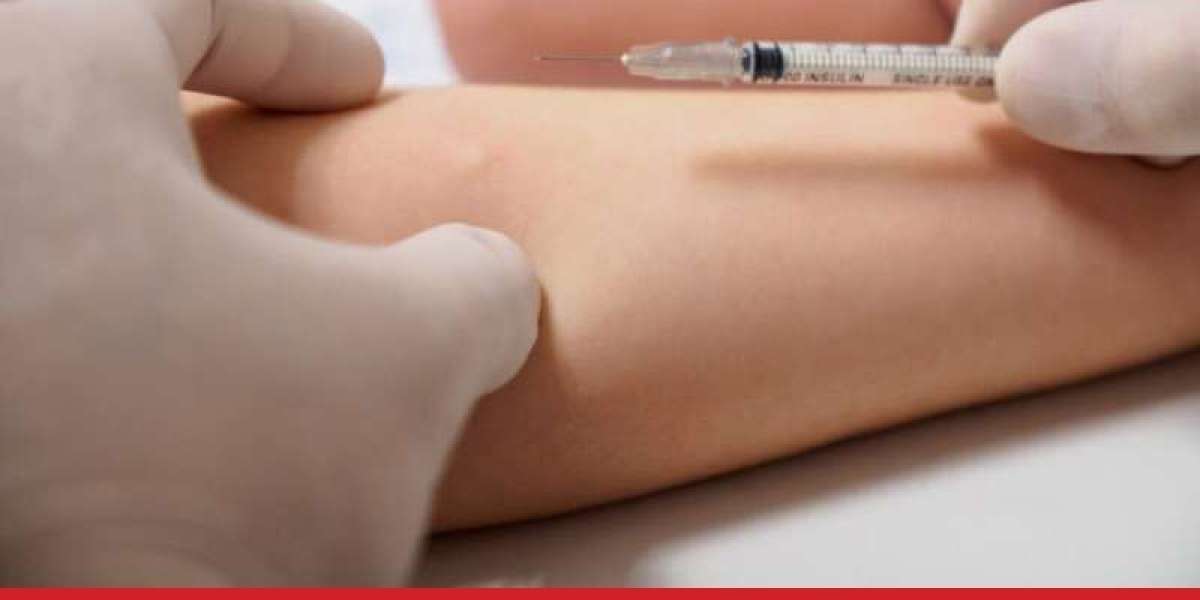Tuberculosis (TB) remains a significant global health concern, and screening for this infectious disease is a crucial aspect of prevention and control. One common method used for TB screening is the Tuberculin Skin Test, also known as the PPD (Purified Protein Derivative) test.
This article explores the TB skin test,its procedure, interpretation of results, and its importance in identifying individuals at risk of TB infection.
What is the TB (PPD) Skin Test?
The Tuberculin Skin Test, or PPD test, is a diagnostic tool used to determine if an individual has been exposed to the bacteria that cause tuberculosis. It involves the injection of a small amount of PPD, a protein derived from Mycobacterium tuberculosis, into the skin. The immune response to this injection helps healthcare providers assess whether the person has been infected with the TB bacteria.
Procedure:
Administration of PPD
- A small amount (0.1 ml) of PPD is injected just beneath the top layer of the skin, usually on the forearm. The injection creates a raised bump, often referred to as a "wheal" or "bleb."
Observation Period
- After the PPD injection, the individual must return to the healthcare provider within 48 to 72 hours for an assessment of the reaction. The size of the raised area at the injection site is measured using a ruler.
Interpretation of Results
- The reaction at the injection site is an essential indicator of the person's immune response to the TB bacteria. A larger induration (raised area) typically indicates a stronger reaction, suggesting a possible TB infection.
Interpreting PPD Test Results:
Positive Result:
- A positive PPD test result does not necessarily mean that an individual has active tuberculosis. It indicates exposure to the TB bacteria. Factors such as recent TB vaccination (BCG) or prior TB infection may contribute to a positive result.
Negative Result:
- A negative PPD test result generally suggests that an individual has not been infected with the TB bacteria or has been exposed recently. However, a negative result does not rule out the possibility of latent TB infection, as false negatives can occur.
Indeterminate Result:
- In some cases, the PPD test may yield an indeterminate result. This could be due to various factors, including improper administration, certain medications, or underlying health conditions affecting the immune system.
Importance of the TB (PPD) Skin Test:
Identifying Latent TB Infection:
- The PPD test is valuable for identifying individuals with latent TB infection. Latent TB means that the person has been infected with the TB bacteria but does not have active disease. Detecting latent TB is crucial for initiating preventive treatment and reducing the risk of progression to active TB.
Contact Tracing:
- Individuals who have been in close contact with someone diagnosed with active TB may undergo the PPD test as part of contact tracing efforts. Identifying latent TB infection in close contacts helps prevent the spread of the disease.
Screening High-Risk Populations:
- Certain populations, such as healthcare workers, individuals with compromised immune systems, and those residing in congregate settings, may undergo regular PPD testing due to their increased risk of TB exposure.
Monitoring Treatment:
- The PPD test can be used to monitor the effectiveness of TB treatment in individuals diagnosed with active TB disease. A decreasing reaction size over time may indicate a positive response to treatment.
Considerations and Limitations:
BCG Vaccination:
- Individuals who have received the Bacillus Calmette-Guérin (BCG) vaccine, often administered in countries with a high prevalence of TB, may have a positive PPD test result. In such cases, healthcare providers consider other diagnostic tools to confirm TB infection.
Boosting Phenomenon:
- The PPD test may produce a false-negative result if an individual has been tested multiple times and is retested after a long interval. This phenomenon, known as the "boosting effect," highlights the importance of accurate medical history documentation.
Variability in Interpretation:
- Interpreting PPD test results is not always straightforward, and healthcare providers consider various factors, including the individual's medical history, risk factors, and potential exposure to TB.
Conclusion:
The TB (PPD skin test) remains a valuable tool in the global effort to control tuberculosis. By identifying latent TB infection and assessing exposure to the TB bacteria, the PPD test plays a crucial role in preventing the progression to active disease and limiting the spread of TB within communities. While the test has its limitations and considerations, it continues to be an essential component of TB screening programs, especially in populations at higher risk of TB exposure and infection. As part of a comprehensive approach to tuberculosis control, the PPD test contributes



